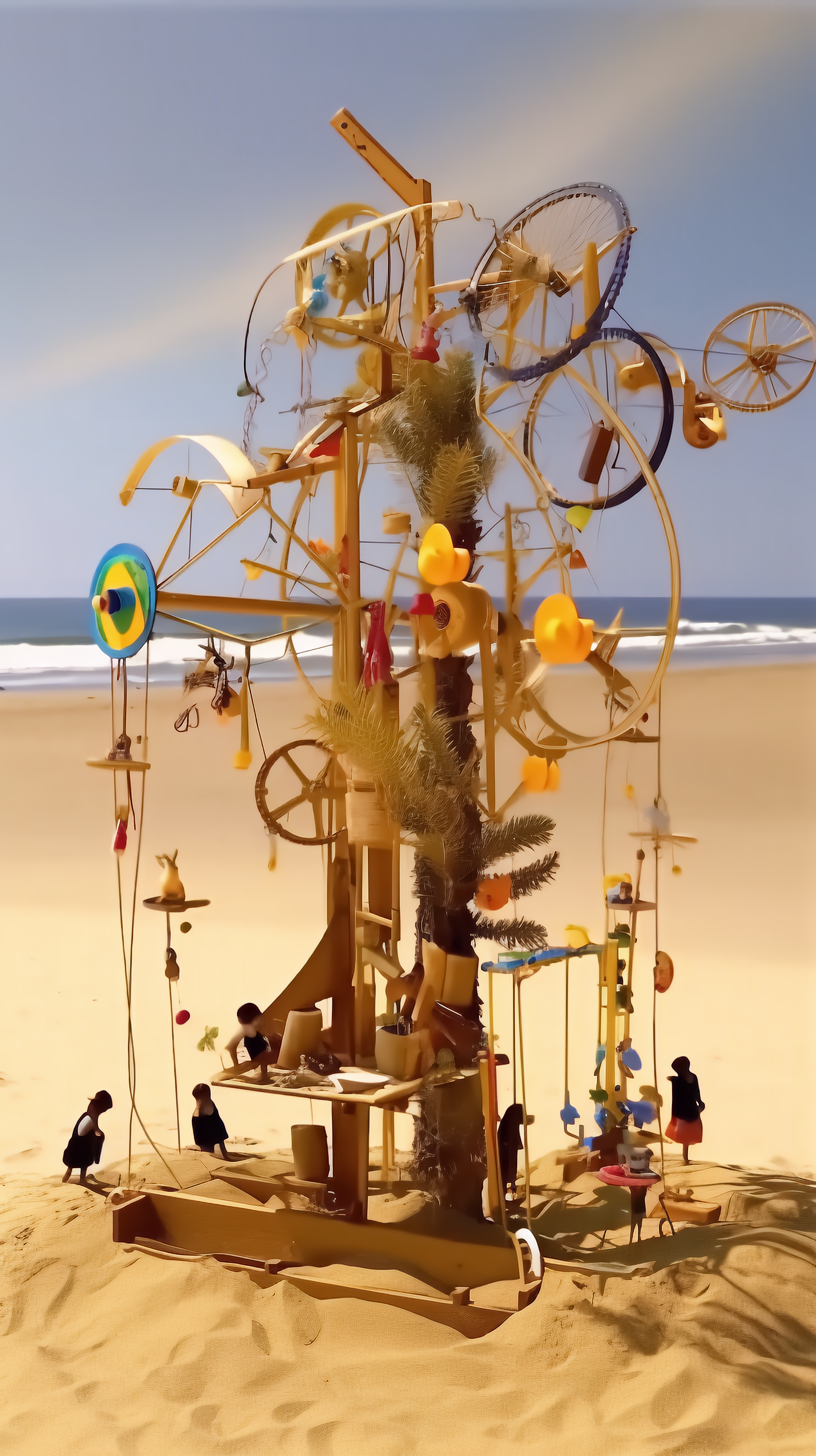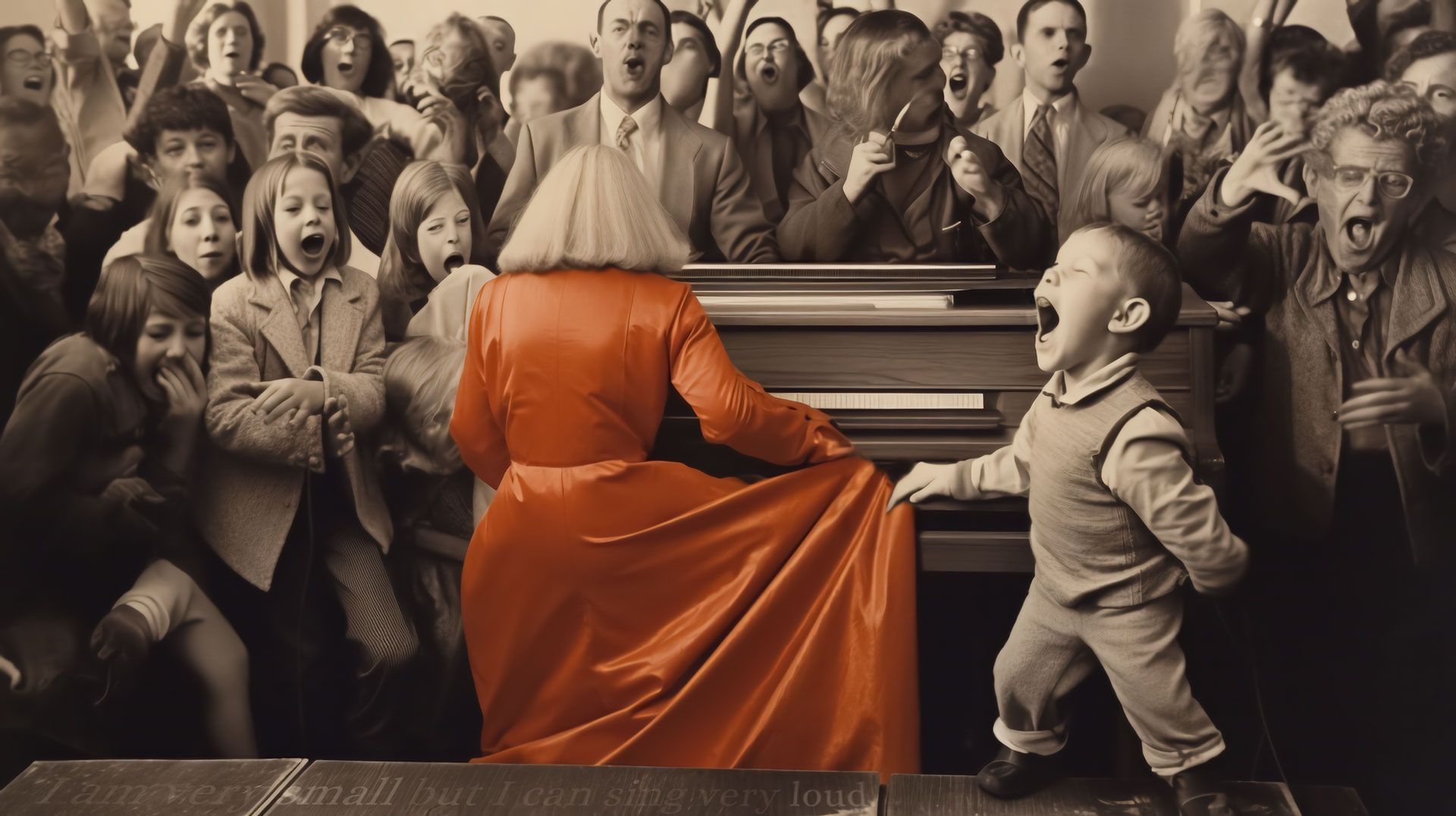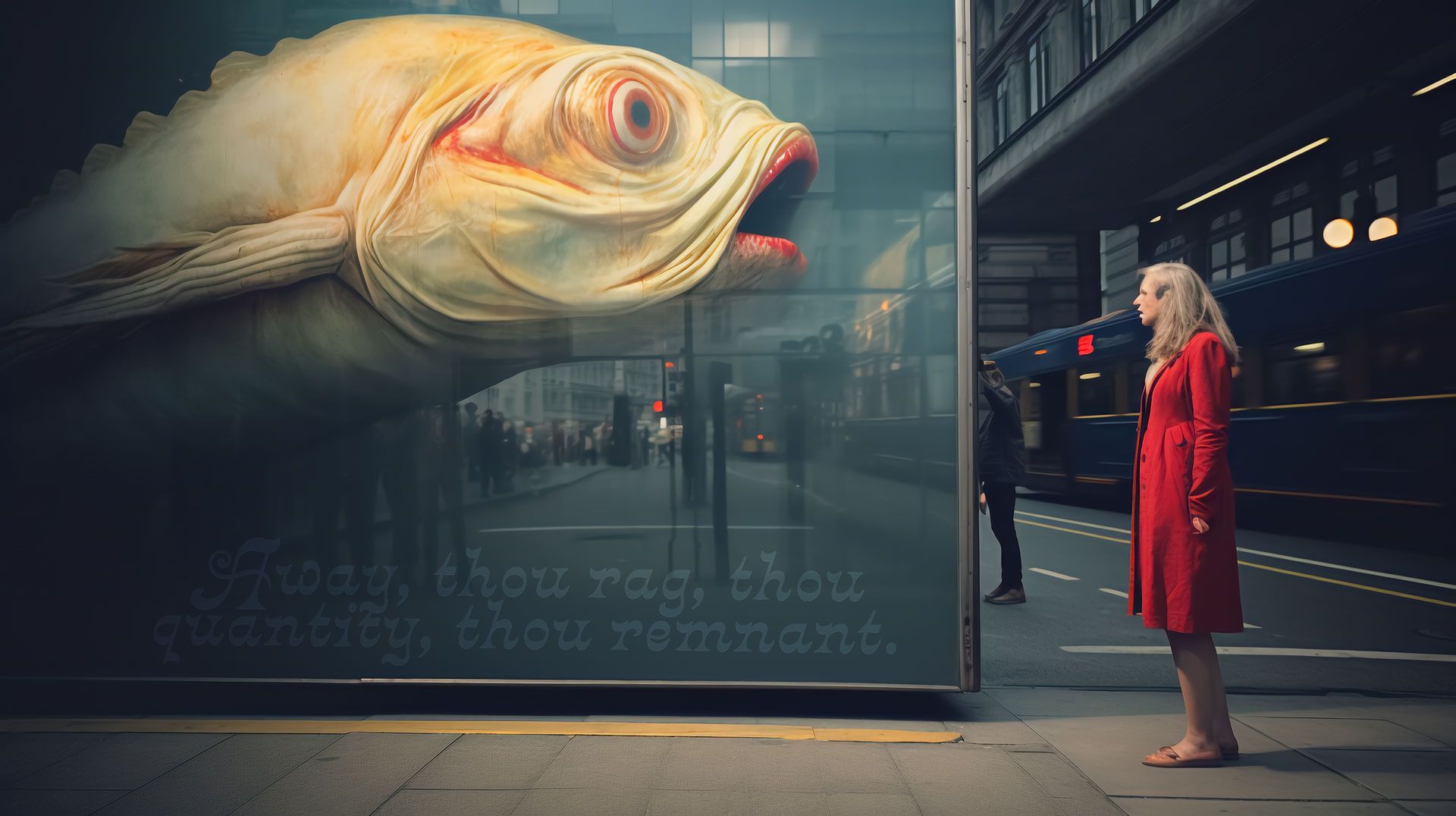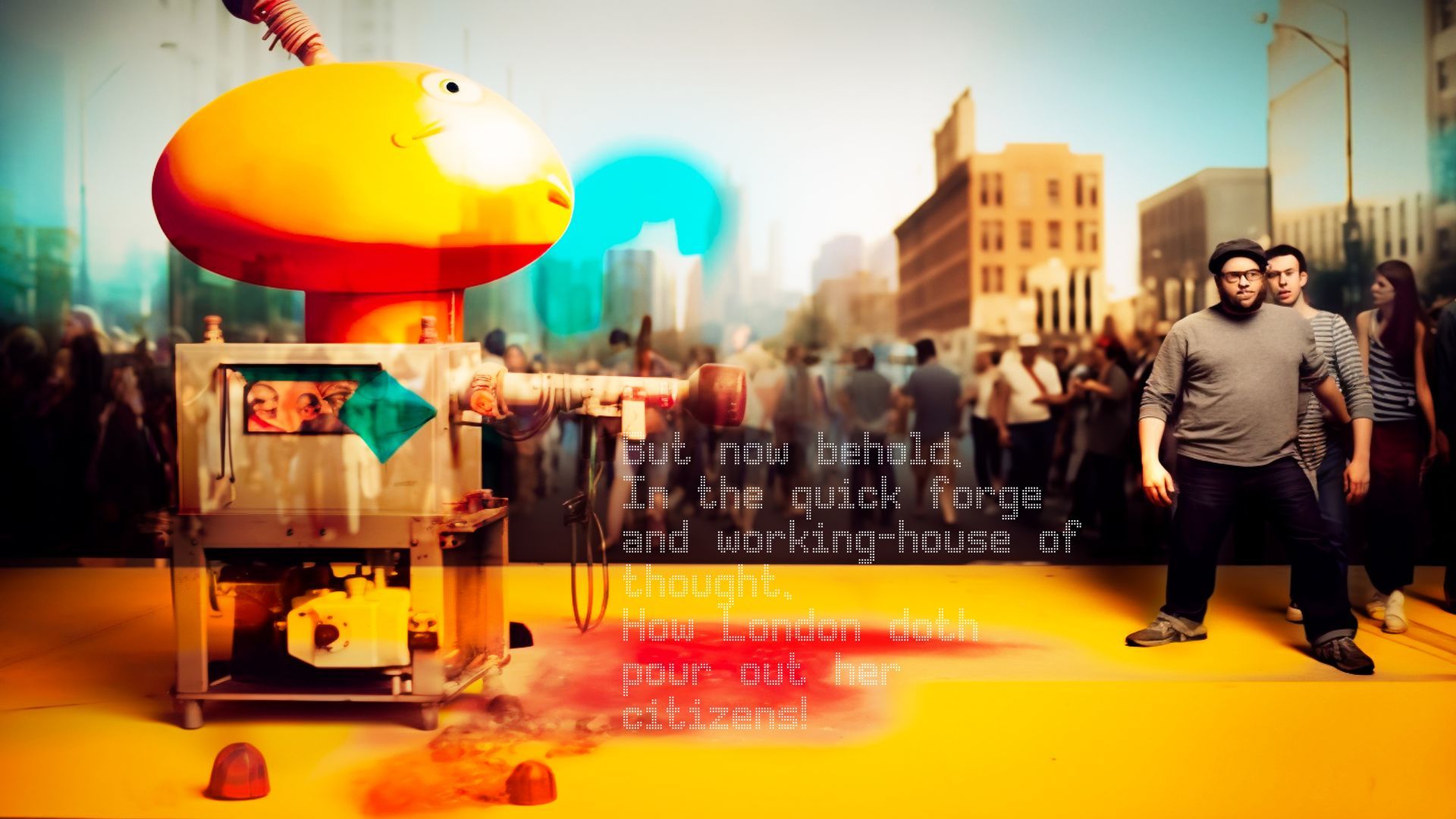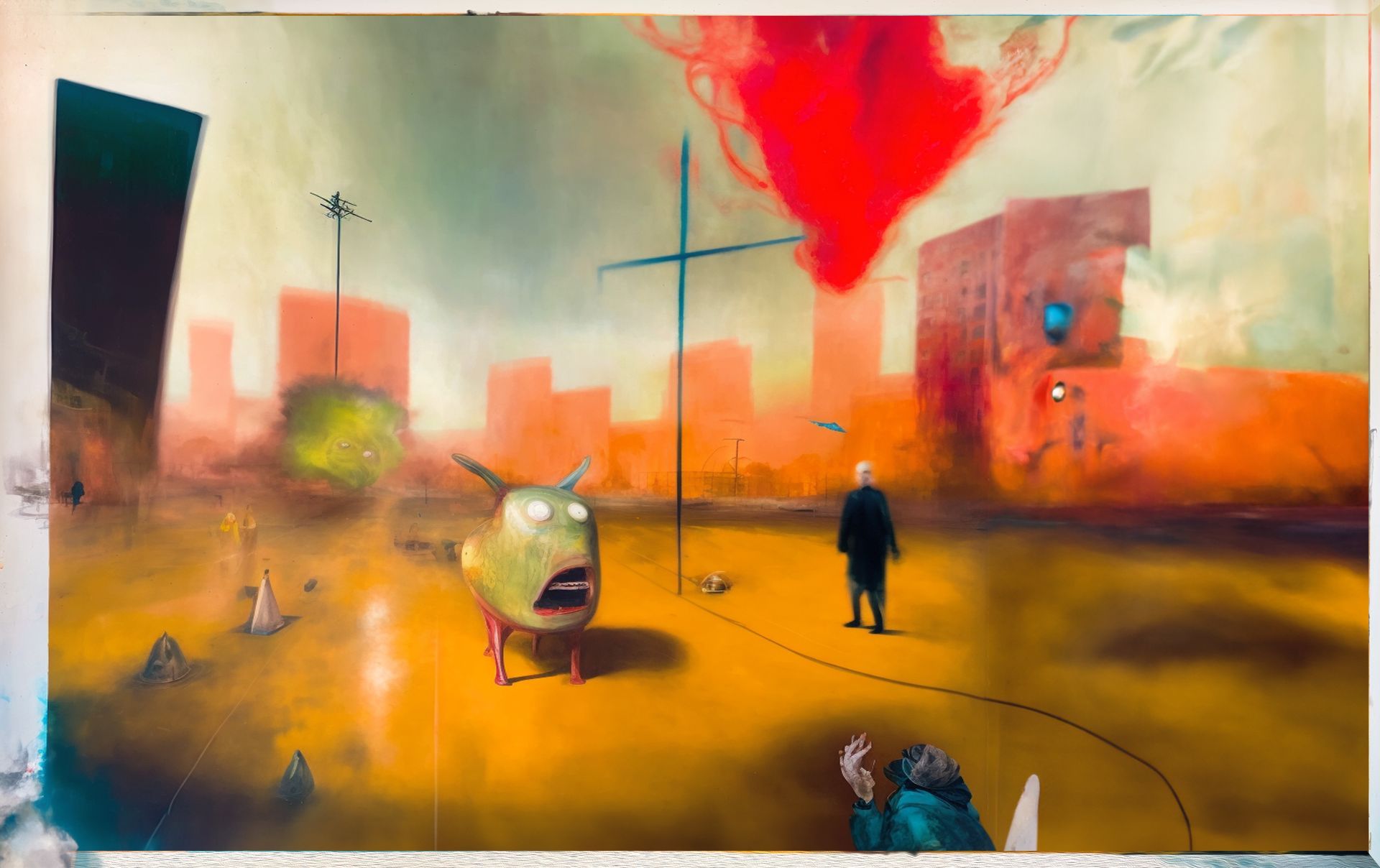Video
Shakespeare Walking to Work
Shakespeare spent a lot of time and effort on words. Elizabethan theatre design was basic. Audiences needed to imagine themselves in battles, enchanted forests, palaces, foreign cities, and scandalous bedrooms from mediaeval Scotland to ancient Rome. The words were written to excite human minds that would never see those events, times, or places. They could ignite the imagination in ways that we have lost.
AI can do the same. It can picture, apparently, anything. I wondered what would happen if I put these organic and computational creatives together and tagged along myself. What could we produce together?
Curtain Road
Curtain Road connects the historical sites of the first two Shakespearean theatres. The Curtain theatre was a stopgap venue for Shakespeare’s company. An in-between arrangement. Having been evicted from their custom-built Theatre, a few paces to the north, they upped-sticks to its close neighbour while they planned the construction of the new playhouse, The Globe, to be built on the south bank of the river Thames.
My exhibition, 'Something Rich and Strange' explored the psychogeographic potency of the location. This video installation faced out onto the street, reflecting and unconcealing the invisible layers of theatrical unreality that seem somehow more real and meaningful than the quotidian reality of today.
If Music be the Food of Love
Shakespearean lyrics and poetry have been sadly neglected by modern musicians. With the help of AI image, video and music generators I've addressed this omission. It turns out they adapt very readily to death metal or ambient interpretation, given a little licence.
This is a compilation of short 'music videos', taking some of the timeless themes of love, revenge, and the morally dubious intersections of sex, drugs and rock 'n' roll.
Elizabethan theatre was popular entertainment. Every play ended with a song-and-dance routine, so I really don't think there's anything very radical about this.
Archive
Trees
I asked AI to think about it's brain; how it thinks, and mainly about how it remembers so much. What does it feel like to know all that stuff?
Machines
I asked AI to tell me more about itself: Where were you born? Do you have family? The usual getting-to-know-you stuff.
Dreams
Why can't we remember our dreams? Why are they wiped from the board at the end of the lesson of sleep, leaving only a dusty shadow?
Insults
Shakespeare's insults provide rich prompt-fodder. I asked AI to bring his words to life. Things got very weird, very quickly.
Shoreditch
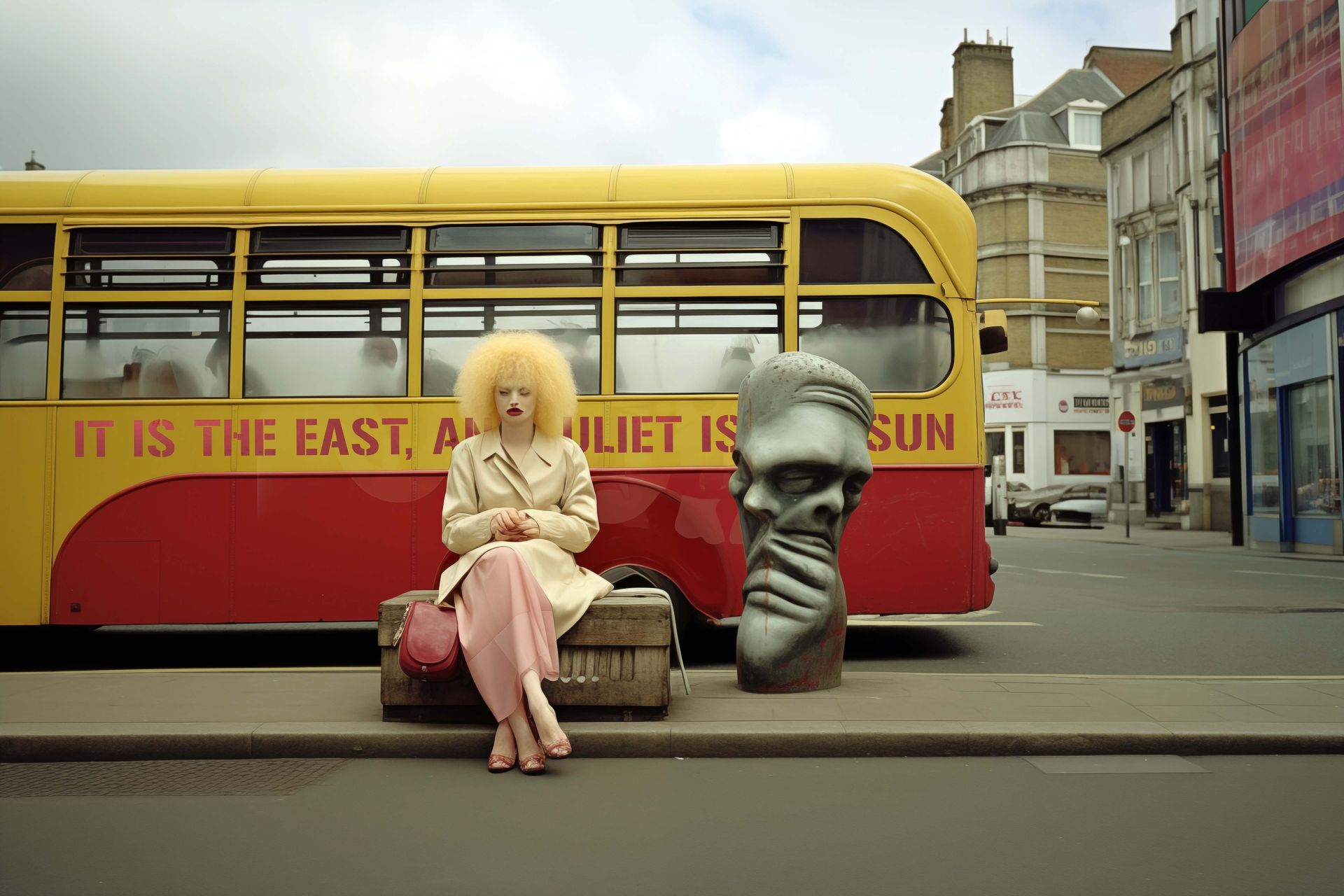
Prompts drawn from Shakespeare's plays brought to life in contemporary London.

